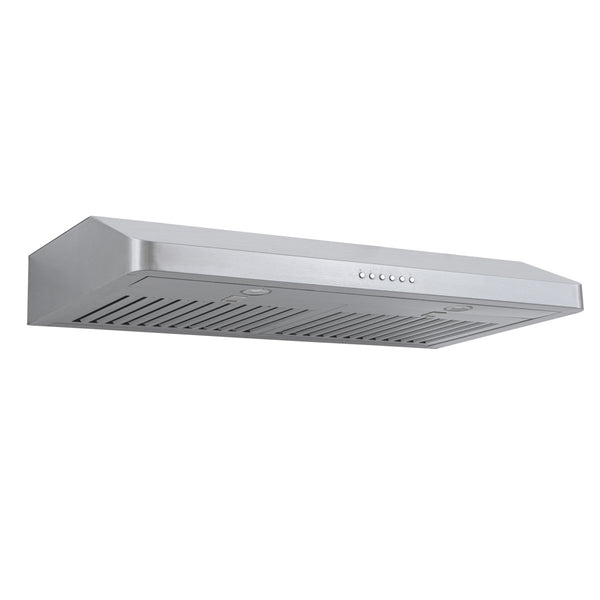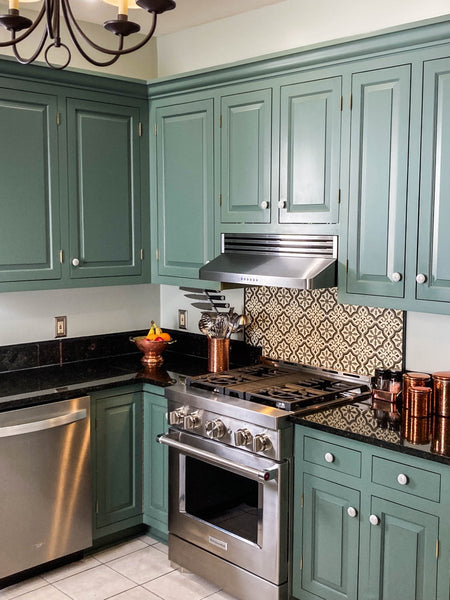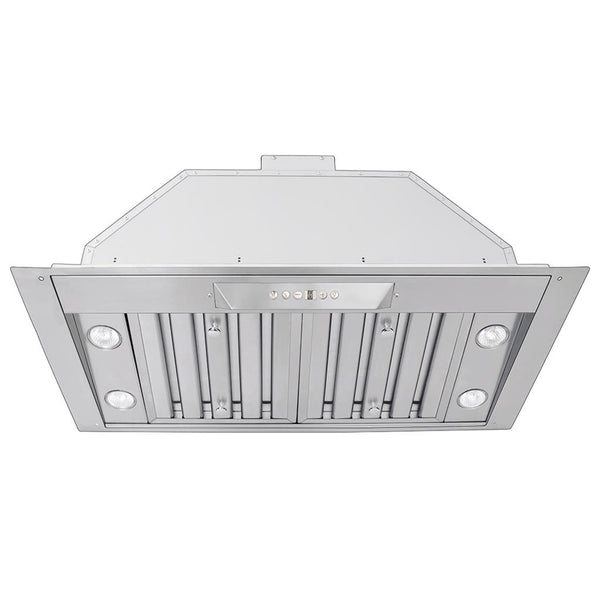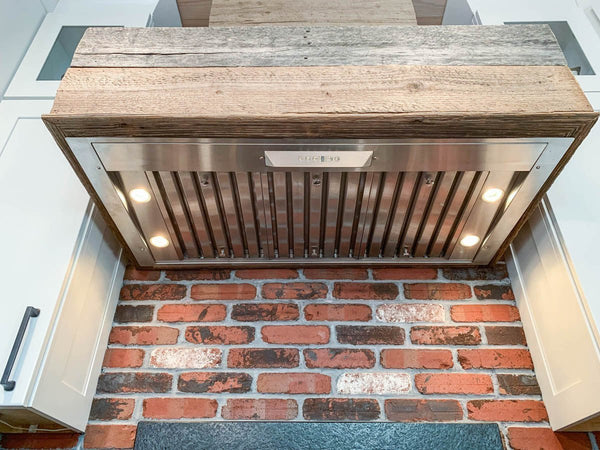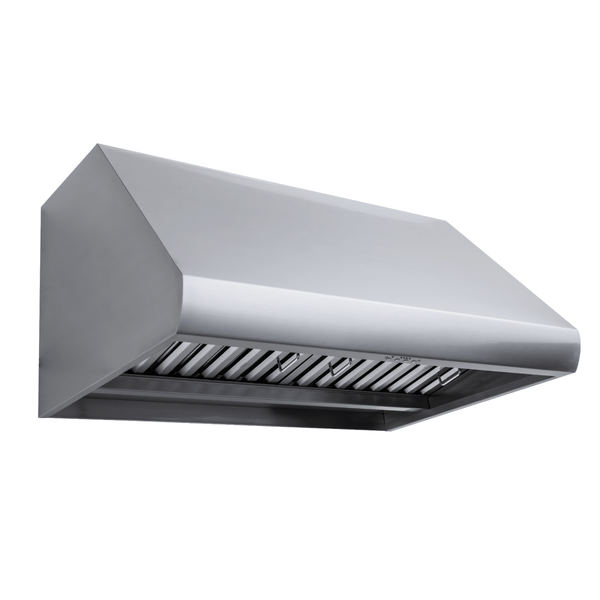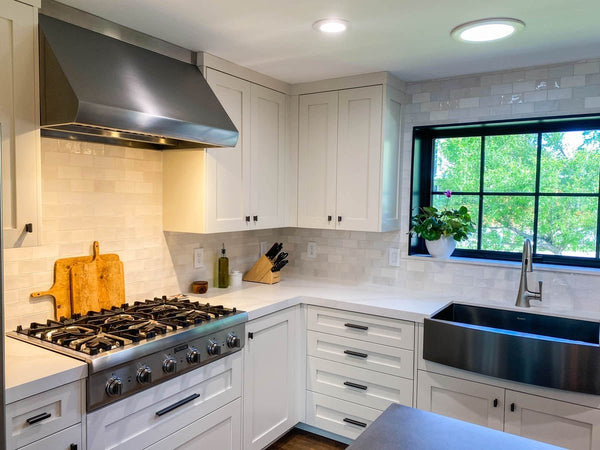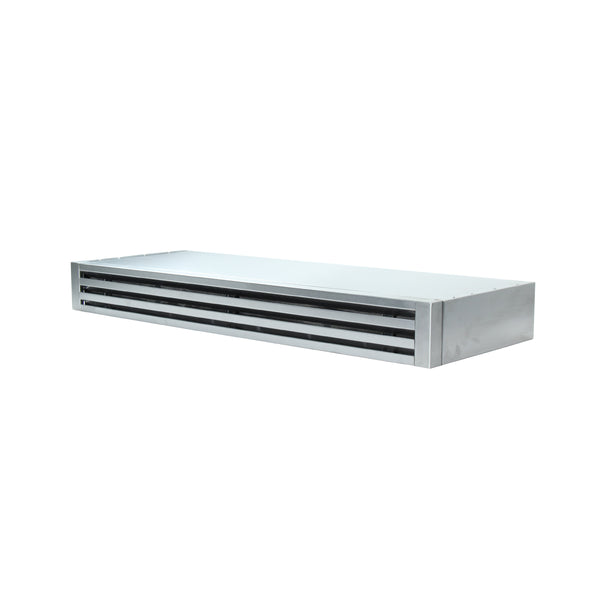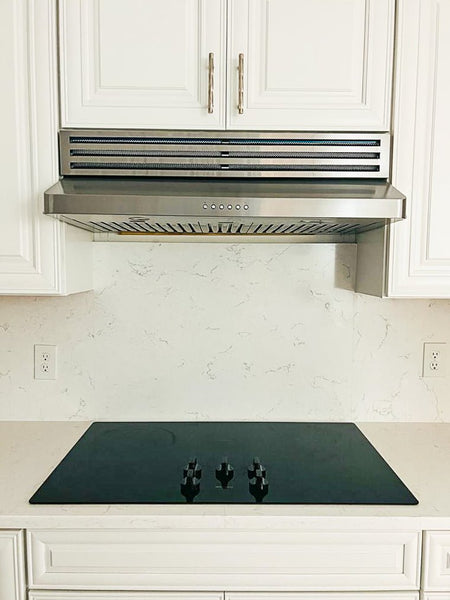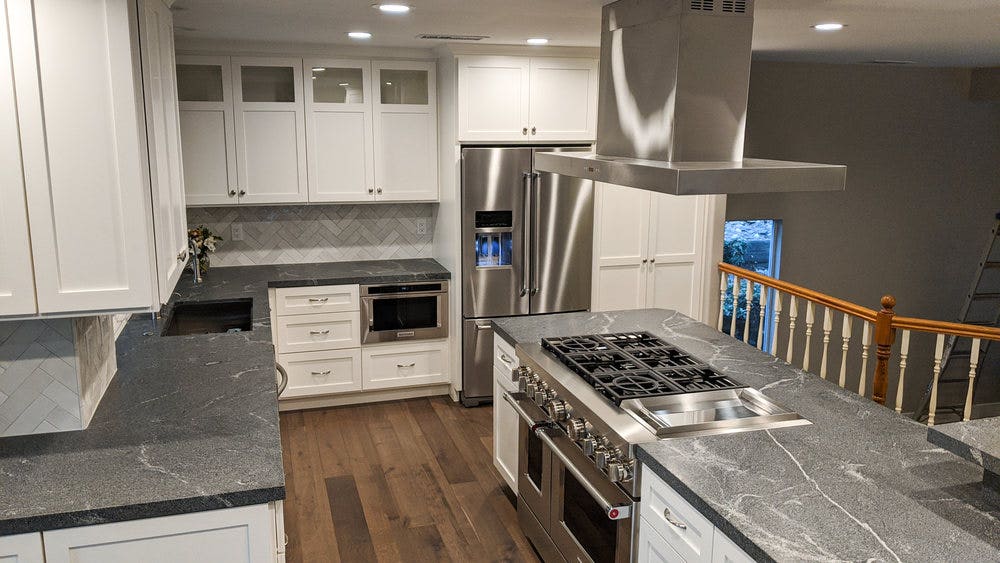Table of Contents
- Baking Soda for Stainless Steel
- Step-by-Step Cleaning Guide
- How to Clean Pots and Pans
- Tips for Cleaning Stainless Steel
- FAQ
Baking Soda for Stainless Steel
Baking soda is one of the most reliable cleaners for your stainless steel appliances. Not only that, but it’s also a popular household item. So, chances are you won’t even have to go to the store to buy it.
Baking soda by itself can get a little messy and be hard to clean up. It can also very easily spill and make a mess if you aren’t careful. One of the best ways to clean stainless steel appliances with baking soda is to use it as a paste.
The paste is a simple mixture of water and baking soda. It’s easier to spread on an area of your stove, range hood, fridge, or whatever you’re cleaning. Also, the paste is quite effective at breaking down tough grease and baked-on food or stains.
Follow the quick step-by-step guide below to leave your stainless steel appliances squeaky clean.
Step-by-Step Cleaning Guide

-
Mix two to three parts of baking soda with one part water to form a paste.
-
Spread the paste onto your stainless steel appliance.
-
Let it sit for 15 to 20 minutes.
-
Wipe with a damp cloth in the direction of the grain.
-
Remove excess residue with a dry cloth.
-
Optionally, spray with vinegar and water for extra shine.
Mix two to three parts of baking soda with one part water to make baking soda paste.
Put some baking soda in a bowl and then add water to it until you have your desired consistency.
You don’t want the paste to be too soupy. It works best when it’s a little solid. That way, it can adhere to any stainless steel surfaces. How thick or thin you want the paste is up to you.
If you’re dealing with water spots or streaks, you may not need much baking soda. But if you’re tackling baked-on food, you may want to go with a thicker paste.
Spread the baking soda paste on your stainless steel appliance.
A little paste goes a long way, especially if you made it thick. You likely won’t have to coat your whole appliance with the paste. Start with the worst areas first and go from there.
Let it sit for 15 to 20 minutes.
Now, your work is done. Just wait 15 to 20 minutes so the baking soda and water can break down tough stains on your appliance.
Wipe the baking soda paste with a damp cloth in the direction of the grain.
Now that the 20 minutes is up, use a damp soft cloth to wipe the baking soda paste from the appliance. Wipe in the direction of the grain for best results.
Every stainless steel appliance has a grain. If you feel some resistance as you wipe, you’re probably going against the grain.
Remove excess baking soda residue with a dry cloth.
The final step is to get all the excess baking soda off of your appliance. Grab a dry cloth and wipe away the moisture and baking soda residue.
You can also spray the stainless steel with some vinegar and water, then wipe. This gives the stainless steel appliance a beautiful shine.

How to Clean Pots and Pans
Pots and pans can get grimy fast, especially if you do a lot of cooking. But, they are one of the easiest stainless steel appliances to clean. Unlike most appliances, you have the benefit of using intense heat to help break down the baked-on food and grime.
Here’s what you need to do:
- Place about two cups of water and vinegar as well as one to two tablespoons of baking soda in the pan.
- Set a lid on the pan and bring it to a boil.
- Once the pan is boiling, let it continue to boil for three to five minutes before removing it from the heat.
- Allow the pan to cool for at least 15 minutes.
- Once cooled, dump the contents of the pan.
- Rinse the pan in warm or cool water and wipe it with a dry microfiber cloth.
Tips for Cleaning Stainless Steel
1. Use distilled water, if available.
Depending on where you live, the hard water will be a little rougher on stainless steel than distilled water. It won’t damage the stainless steel. But, if you want to get the most out of your stainless steel appliance, distilled water is the way to go.
2. Clean your appliances with a soft microfiber cloth.
A microfiber cloth will be the most gentle on your stainless steel appliances. Paper towels and rags can wear down the finish or scratch the appliance.
3. Polish the stainless steel with vinegar and water after cleaning.
To give your stainless steel appliances a beautiful shine, spray them with a vinegar-and-water solution after cleaning the difficult stains. Vinegar and water in a 1:1 ratio work best.
4. Avoid abrasive cleaners.
Stick with cleaners made for stainless steel, glass cleaner or acetone. Avoid bleach, scouring powders, and other abrasive products.
Does vinegar damage stainless steel?
Concentrated vinegar can damage stainless steel if it’s left to soak on the appliance for several minutes. But, diluted vinegar is perfectly safe to use on stainless steel. Most cleaners out there dilute the vinegar with either water or baking soda to make it more friendly to the stainless steel finish.
How do you get stains out of stainless steel?
To get stains out of stainless steel, sprinkle one part baking soda and pour two parts vinegar on the stainless steel appliance. Let it sit for about 10 minutes, then wipe off the stainless steel. Repeat this process until the stains are gone.
Can I use Windex on my stainless steel appliances?
You can use Windex on your stainless steel appliances. It won’t break down tough grease and dirt, but it is a great option for a surface-level clean. You can also use it to clean off baking soda residue after you let your baking soda and vinegar break down difficult stains.
If you need a cleaner that packs a punch, spray some acetone on stainless steel and let it sit for a few minutes.
If that doesn’t do the job, as a last resort, you can use some no-grit Soft Scrub. But if you use too much, it may damage your appliance. You are better off cleaning two or three times with glass cleaner or baking soda and vinegar.
Check out this video which shows you three ways you can clean stainless steel.
What should you not use on stainless steel appliances?
Avoid using bleach, steel wool, ammonia, oven cleaner, and scouring powders on your stainless steel appliances. These cleaners will wear down the finish quickly and may cause damage. Instead, use acetone, glass cleaner, or stainless steel cleaner
What is the best cleaner for stainless steel?
The Weiman Stainless Steel Cleaner and Polish is one of the best options.
Does vinegar damage stainless steel?
Concentrated vinegar can, but diluted vinegar is safe.
How do you get stains out of stainless steel?
Sprinkle one part baking soda and pour two parts vinegar on the surface. Let it sit for 10 minutes, then wipe clean.
Can I use Windex on stainless steel?
Yes, but it is best for surface cleaning, not deep grease removal.
What should you not use on stainless steel appliances?
Avoid using bleach, steel wool, ammonia, and scouring powders. These can wear down the finish and cause damage.
Be sure to check out our range hoods.
Browse